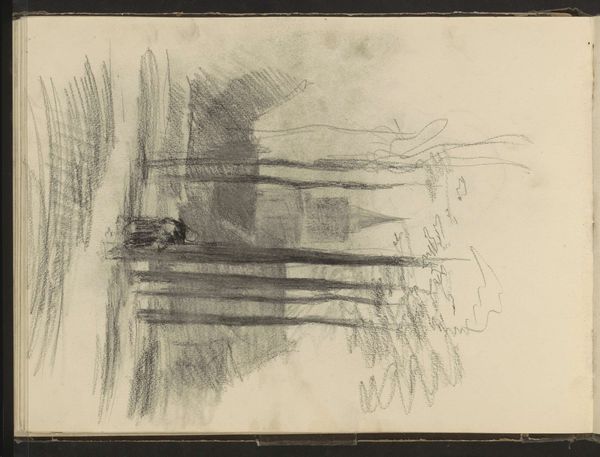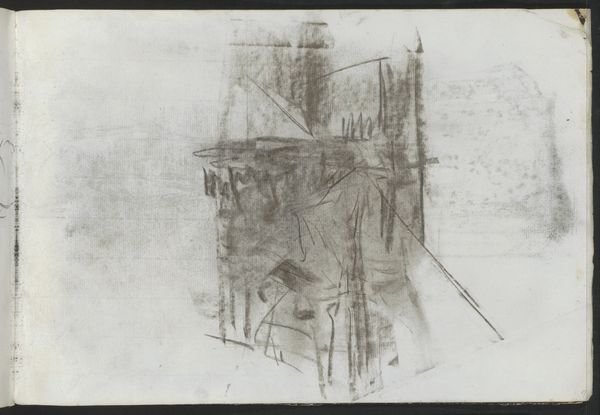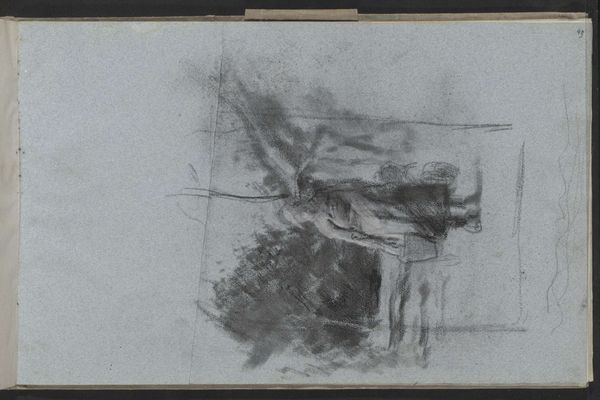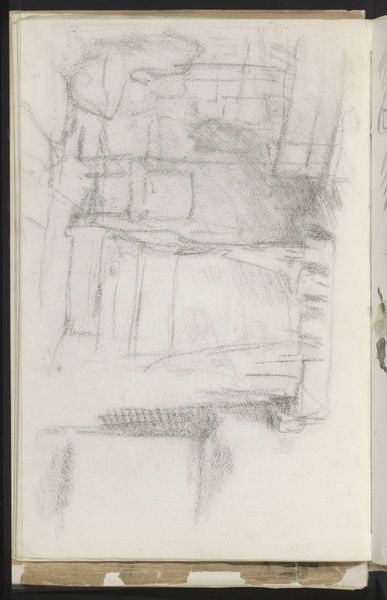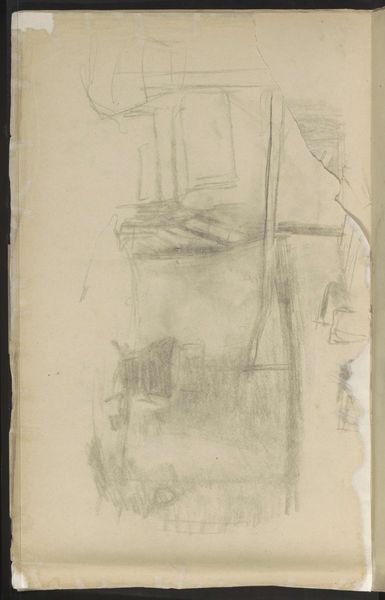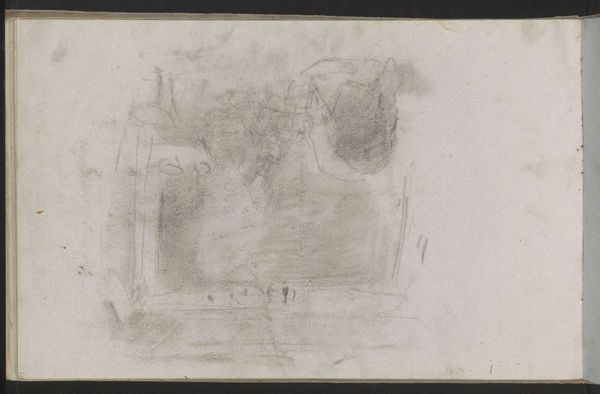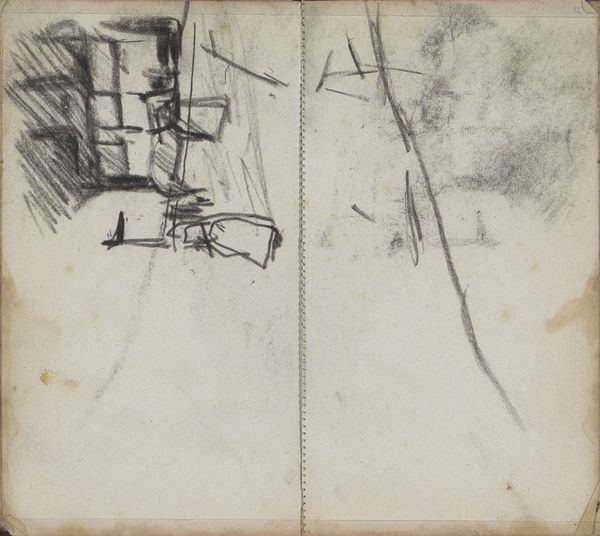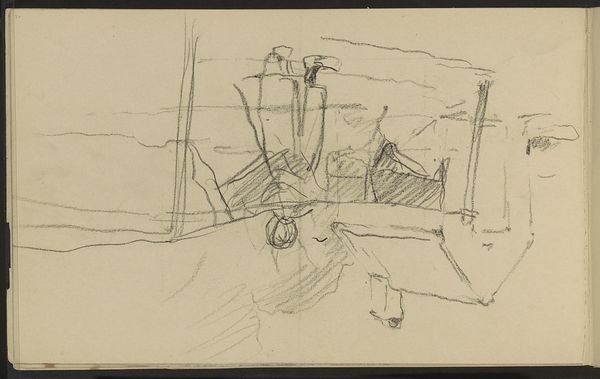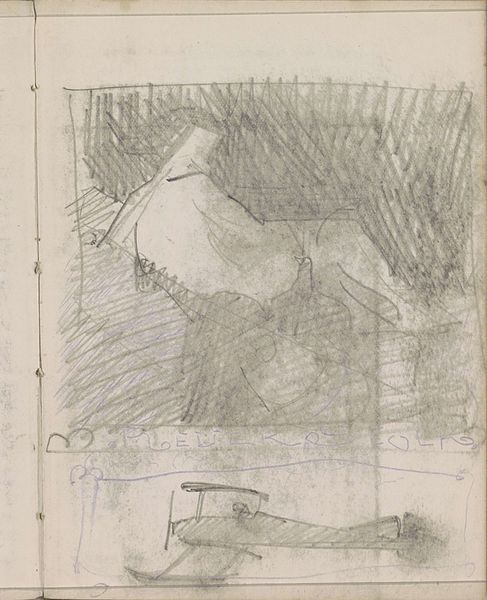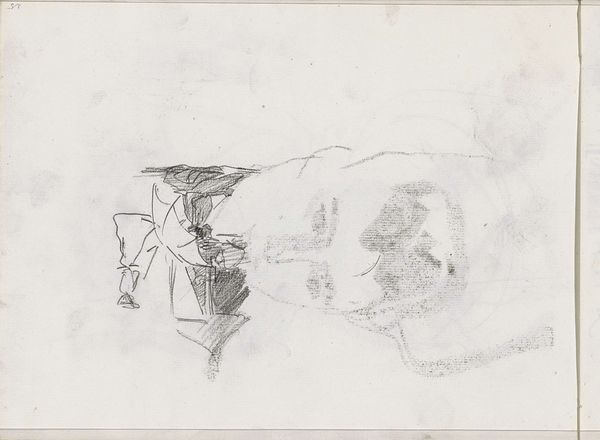
Copyright: Rijks Museum: Open Domain
Curator: We’re looking at Isaac Israels’ “Studie, mogelijk van een vrouw op straat,” or “Study, possibly of a woman on the street,” dating from around 1886 to 1934. It's currently held here at the Rijksmuseum. Editor: Immediate impression: raw, like a half-remembered dream sketched onto paper before the details evaporate. Curator: Precisely! There's a palpable sense of fleeting observation. You see the graphite pencil lines, so light in some areas that they are barely there. Almost like breath on glass, wouldn’t you agree? Editor: Absolutely, it highlights process, you see. The visible, iterative marks… erasure not disguised but incorporated, almost foregrounded. That, to me, makes it intensely material. Curator: I wonder about the woman herself. Who was she? What caught Israels's eye? Was it her stance, a peculiar garment? Or the way light touched her face. He captures a silent narrative in these swiftly placed marks, a portrait blooming with unsaid stories. Editor: A story linked to labor, most likely. Who did she work for, or what kind of work was available at the time the artwork was made? This looks like an example of “low art,” due to its usage of rough sketchbook material, rather than "high art" created by fancy equipment, Curator: Yes, you bring up an essential point! Perhaps he appreciated her presence more than we know. I feel as if he really saw her – not merely as a figure of work, but as a living presence. And it is this kind of drawing that makes the imagination do the heavy lifting! Editor: And how different that lift feels with a simple pencil stroke compared to elaborate oils. Thanks for guiding us to see it differently. Curator: The pleasure was all mine! Each encounter with art becomes an invitation, one that reminds us that to see can indeed mean so very much.
Comments
No comments
Be the first to comment and join the conversation on the ultimate creative platform.
